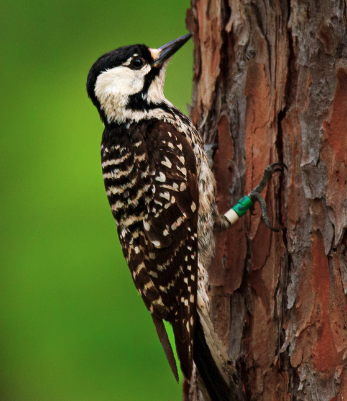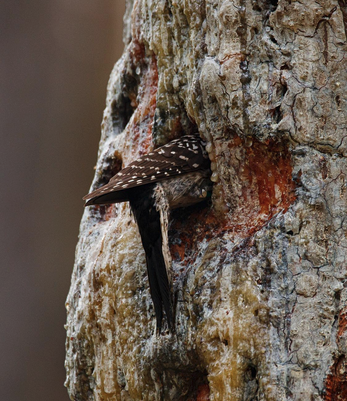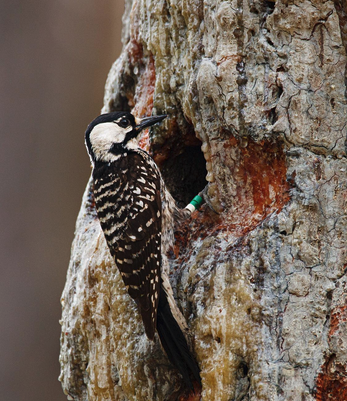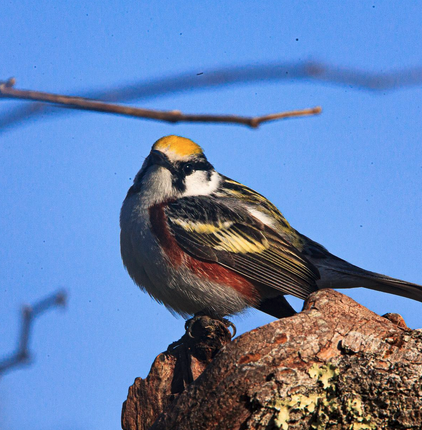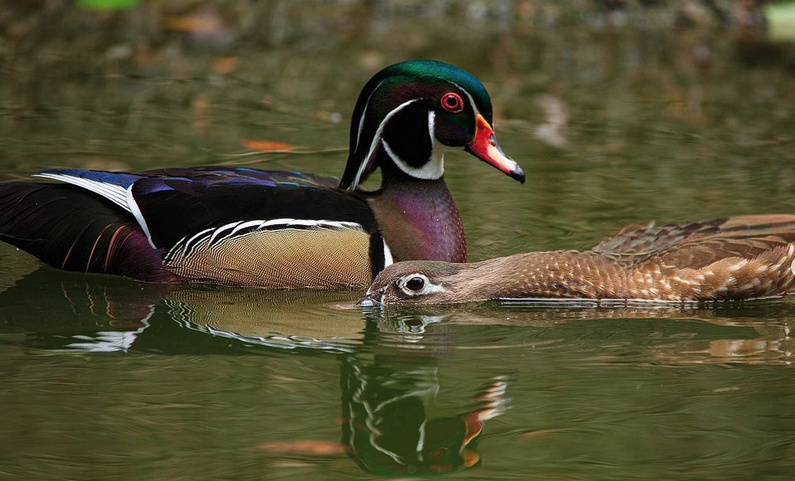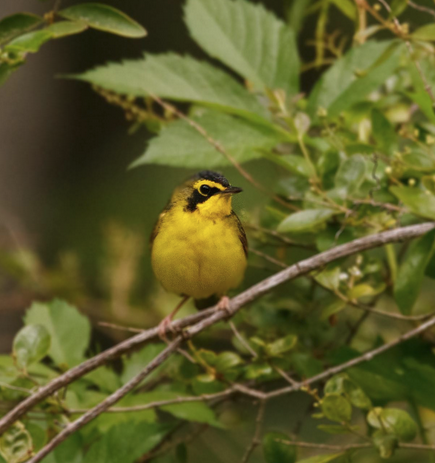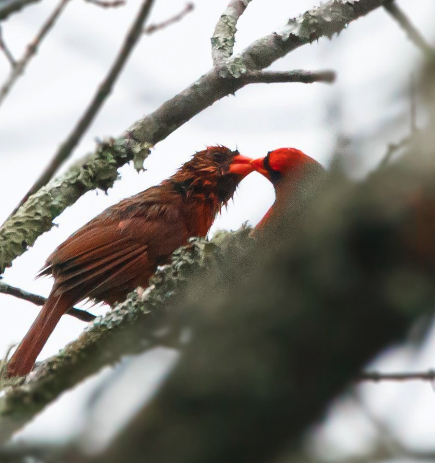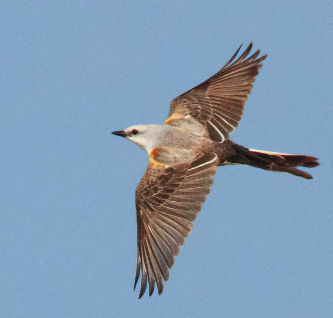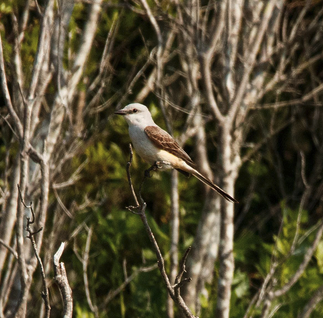By: Sally Siko
Each spring, the woods begin to fill up with the sounds of bird songs. It’s a symphony of whistles, chirps and chortles but with one call in particular that sounds out above all others.
That is the familiar cluck-chirp of the Summer Tanager!
The sound of these gorgeous birds calling to one another in the forest is an unmistakable signal to mark the changing season.

Did you know that the Summer Tanager is the only entirely red colored bird found in the United States? Northern Cardinals and Scarlet Tanagers come close however both of those species also have black feathers on their bodies.
All three species get their bold red hues from carotenoid compounds which produce the red (and sometimes yellow) colors seen in the birds feathers. These are acquired through their diets (mainly through fruit), and are then processed in the body into pigments that are deposited in the growing feathers.
Summer Tanagers are generally spring and summertime residents of North Carolina.
They arrive in April and hang out until September before migrating south to Mexico, Central and South America. That being said, there are small but growing numbers of Summer Tanagers that stick around for the entire winter in the eastern part of the state provided that they have a reliable food source available to them via a feeder.
Pretty cool huh?
Photos by @sally_siko of @bestlife_birding on my beloved full frame 50MP beast, the mighty @canonusa #5Ds

